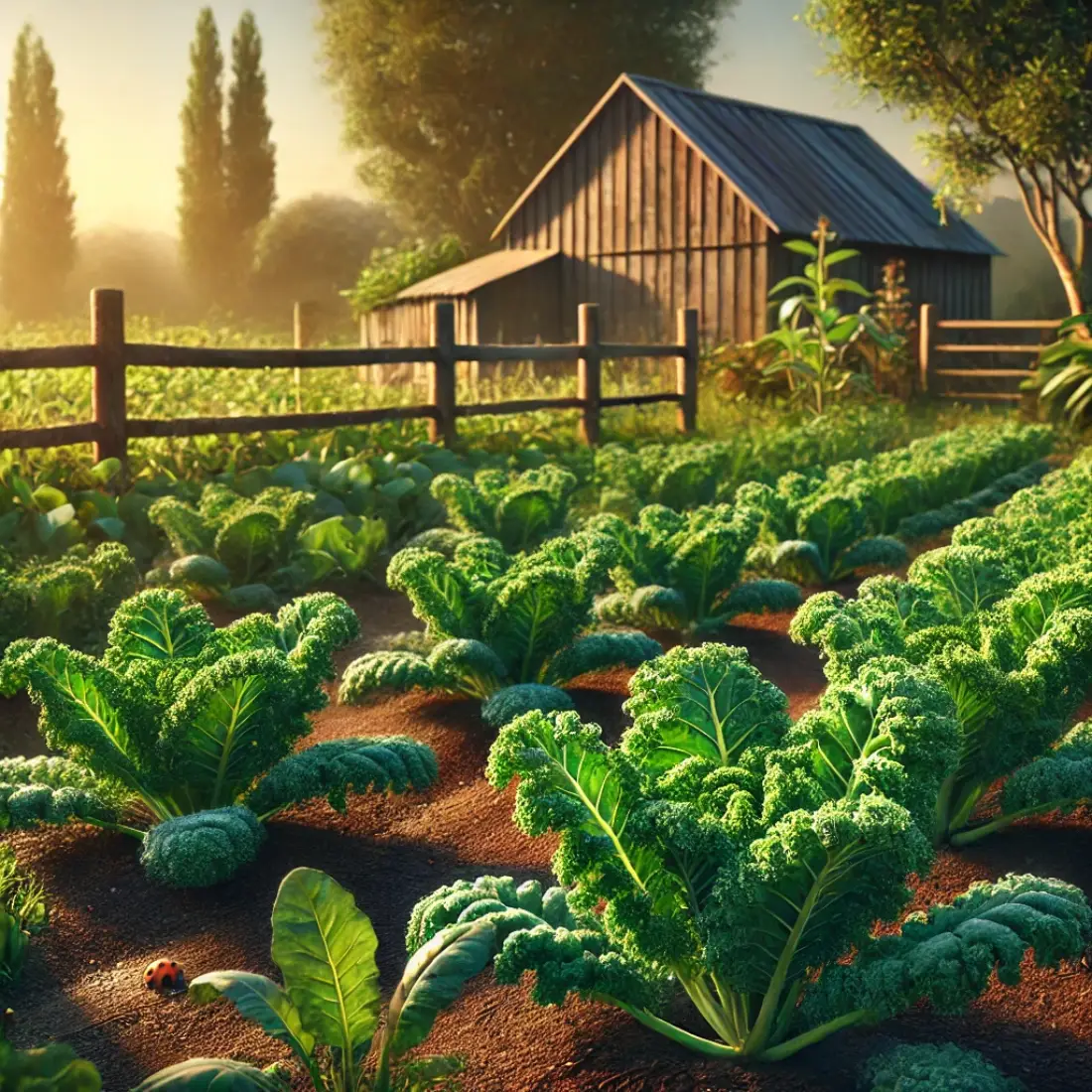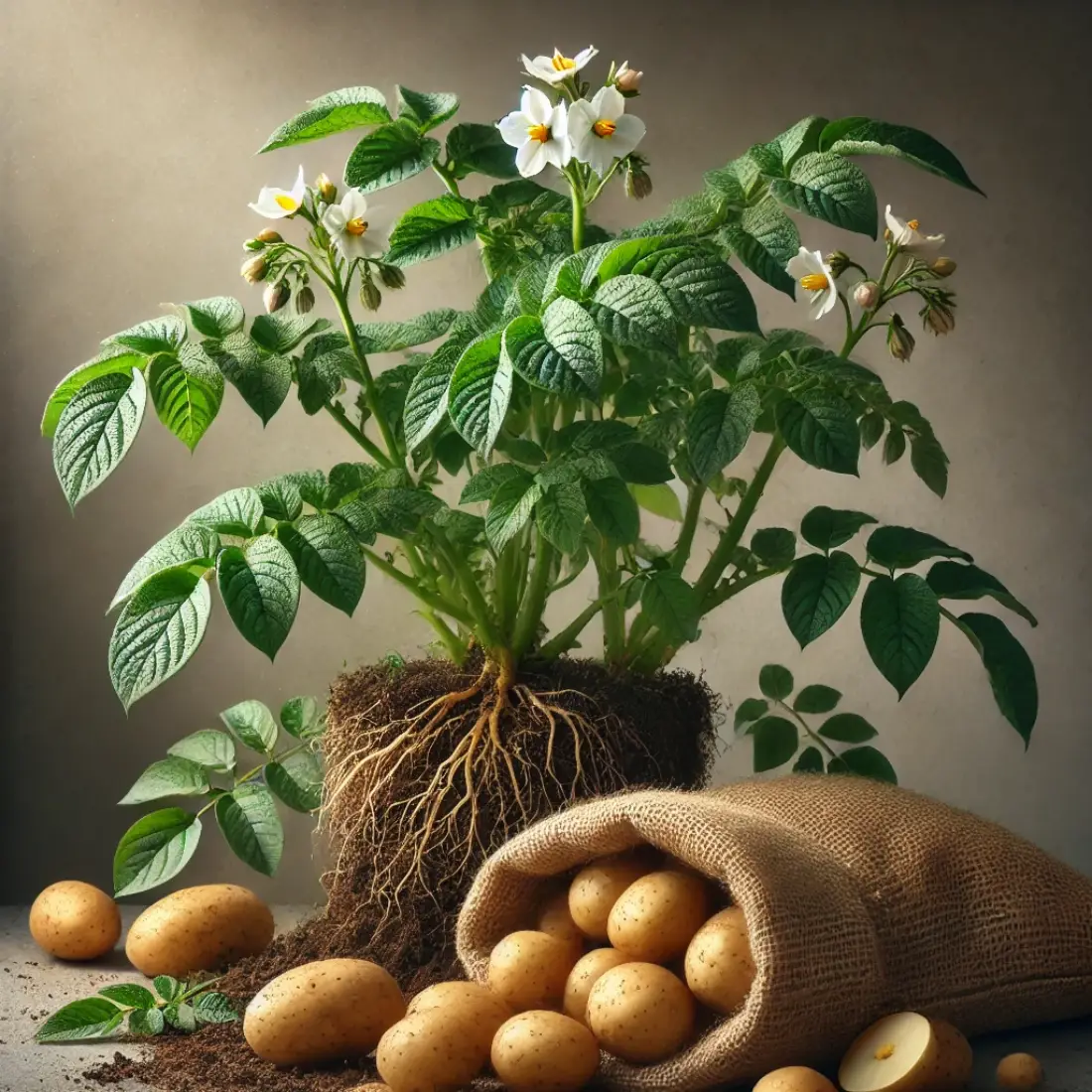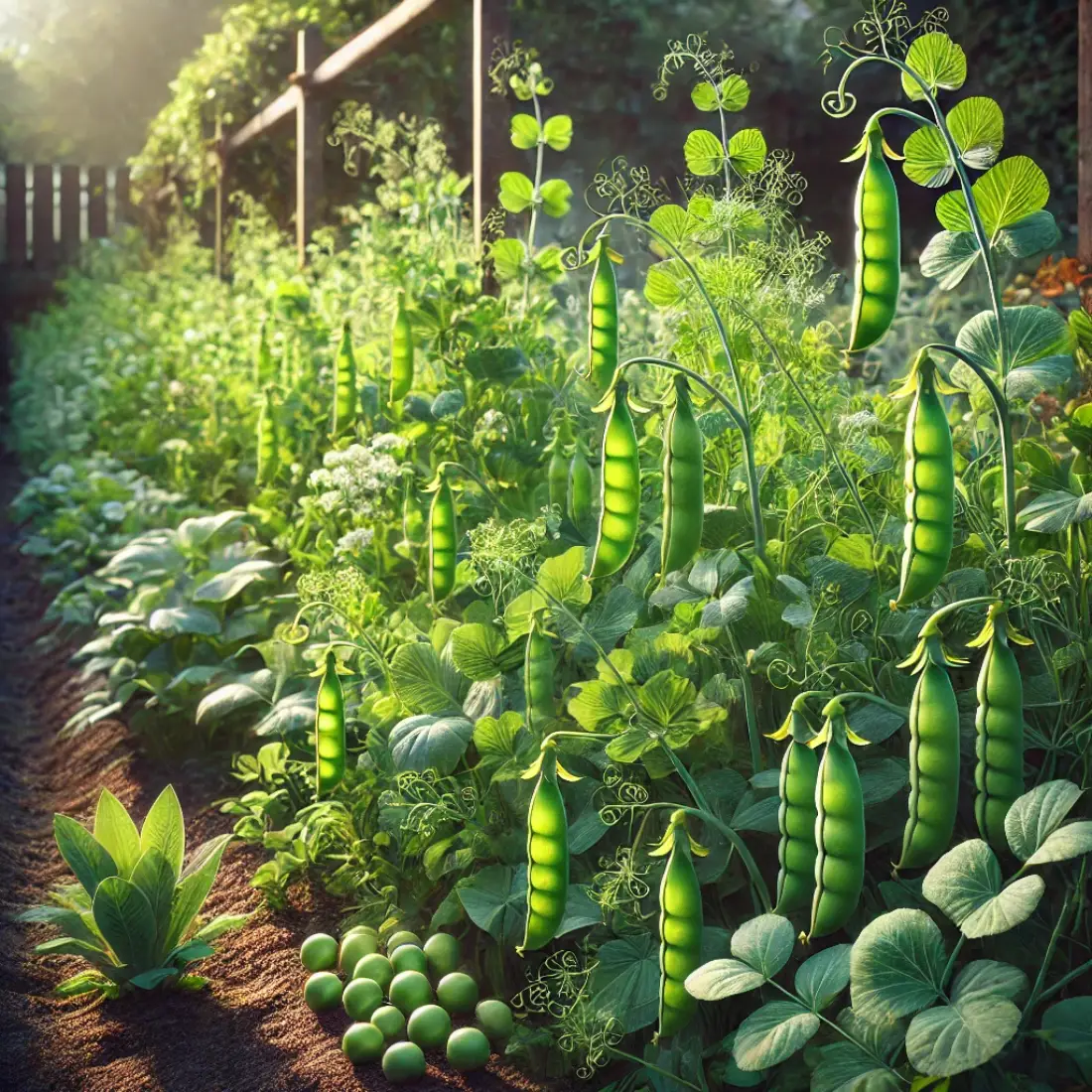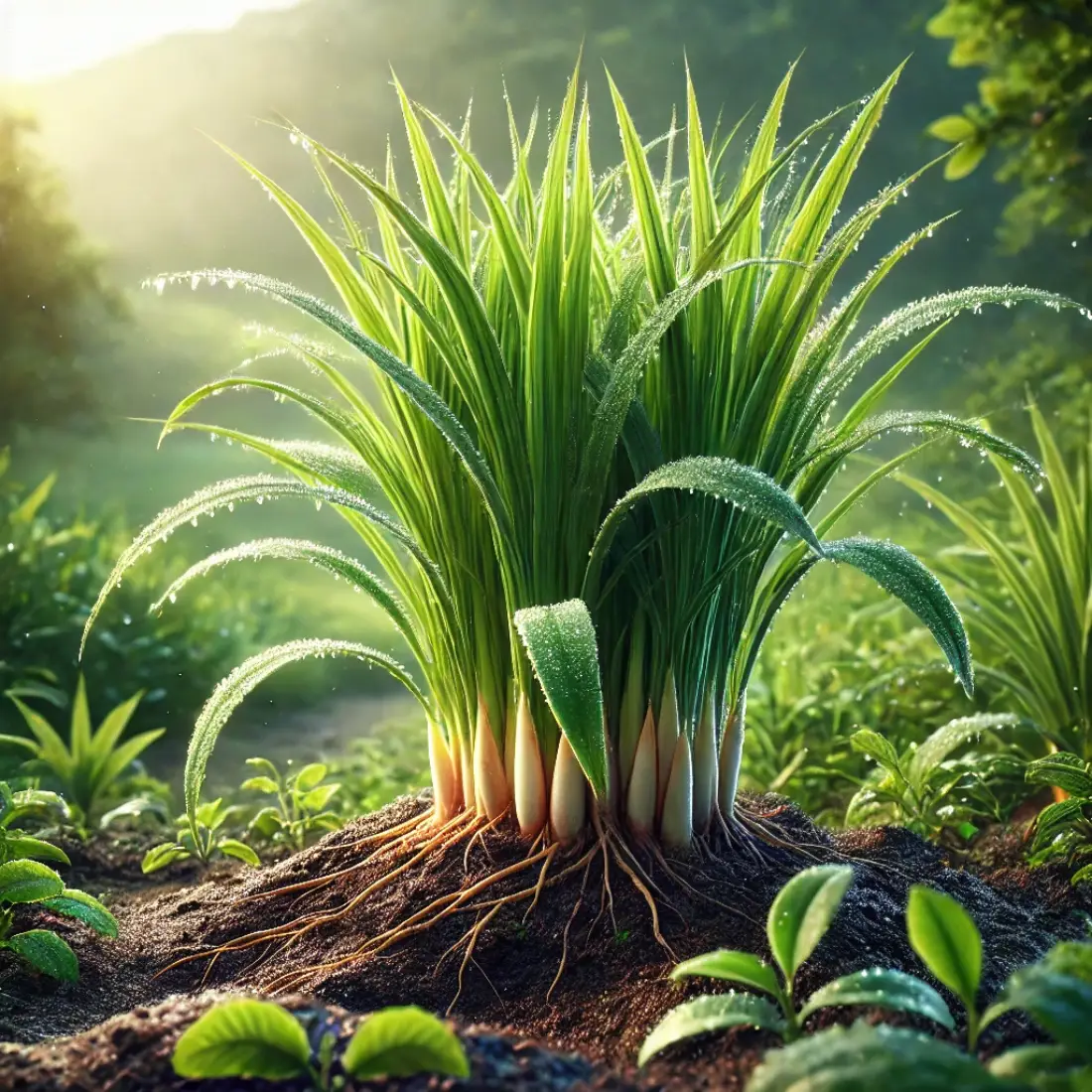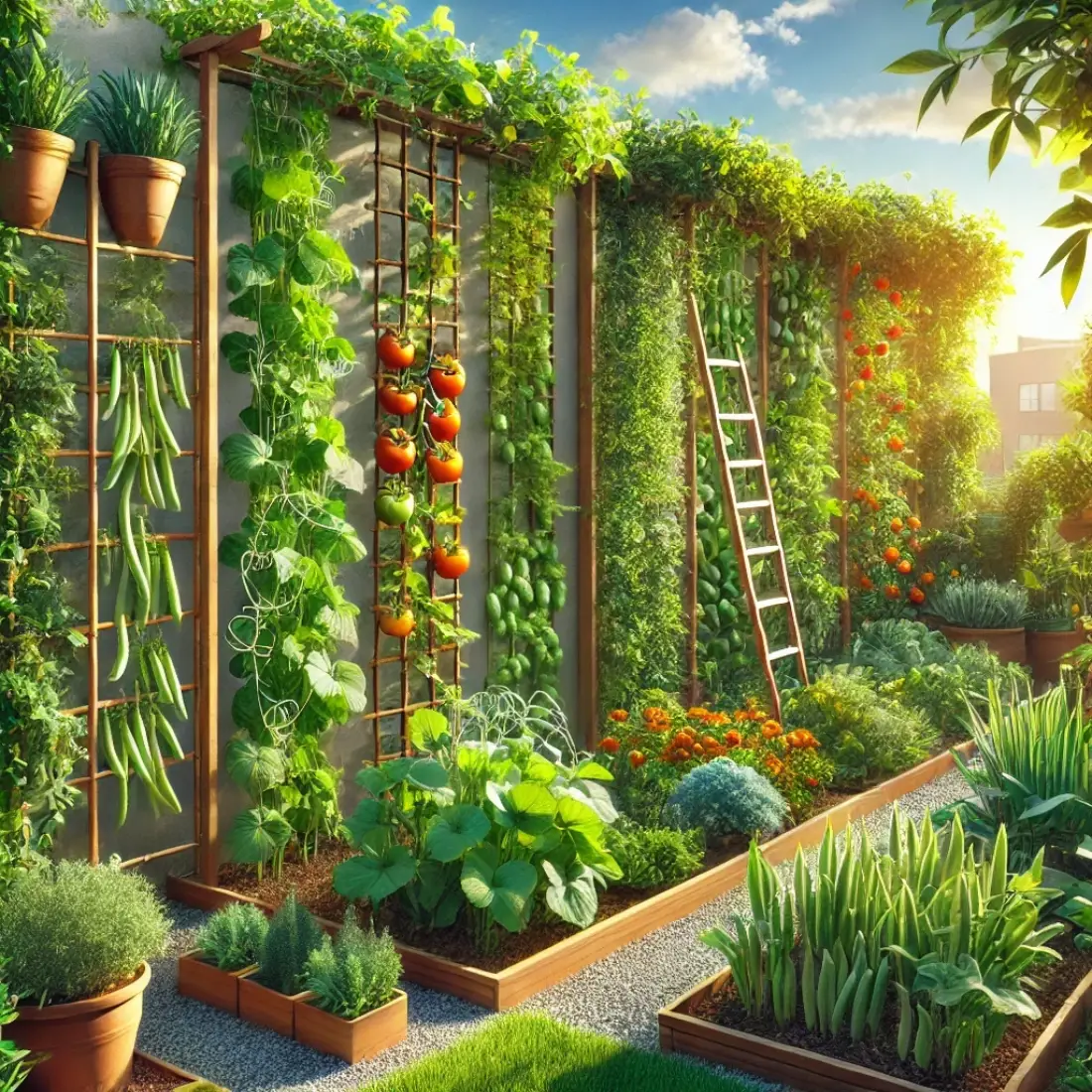Kale, known for its robust flavor and health benefits, is a versatile leafy green that can thrive in various settings.Whether you have a spacious garden, a small balcony, or limited indoor space, you can successfully grow kale using natural soil enrichment, pest control, and sustainable watering techniques.
Kale is a nutritional powerhouse, rich in vitamins A, C, and K, antioxidants, fiber, and essential minerals like calcium and magnesium. It supports eye health, boosts immunity, aids digestion, promotes heart health, strengthens bones, and helps in weight management. Adding kale to your diet enhances overall well-being.
- Growing kale organically ensures healthier, chemical-free produce.
- Kale can be grown successfully in gardens and pots.
- Sunlight is crucial for kale growth, requiring 6-8 hours of direct light daily.
- Rich, well-drained soil with a neutral to slightly acidic pH level is ideal for kale.
- Consistent watering is necessary, with soil kept moist but not waterlogged.
- Use natural fertilizers like compost and manure to enrich the soil.
- Organic pest control methods, such as neem oil and companion planting, help keep pests at bay.
- Regular harvesting promotes continuous growth and tender leaves.
Preparing to Grow Kale
Choosing the Right Variety
When starting your organic kale garden, the first step is to choose the right variety. Kale comes in several types, each with its unique characteristics. The most common varieties are:
- Curly Kale: Known for its ruffled leaves and mild flavor, it’s great for salads and smoothies.
- Dinosaur Kale (Lacinato Kale): Features dark, bumpy leaves with a slightly sweeter taste, ideal for soups and sautés.
- Red Russian Kale: Distinguished by its purple-tinged leaves and tender texture, perfect for salads and garnishes.
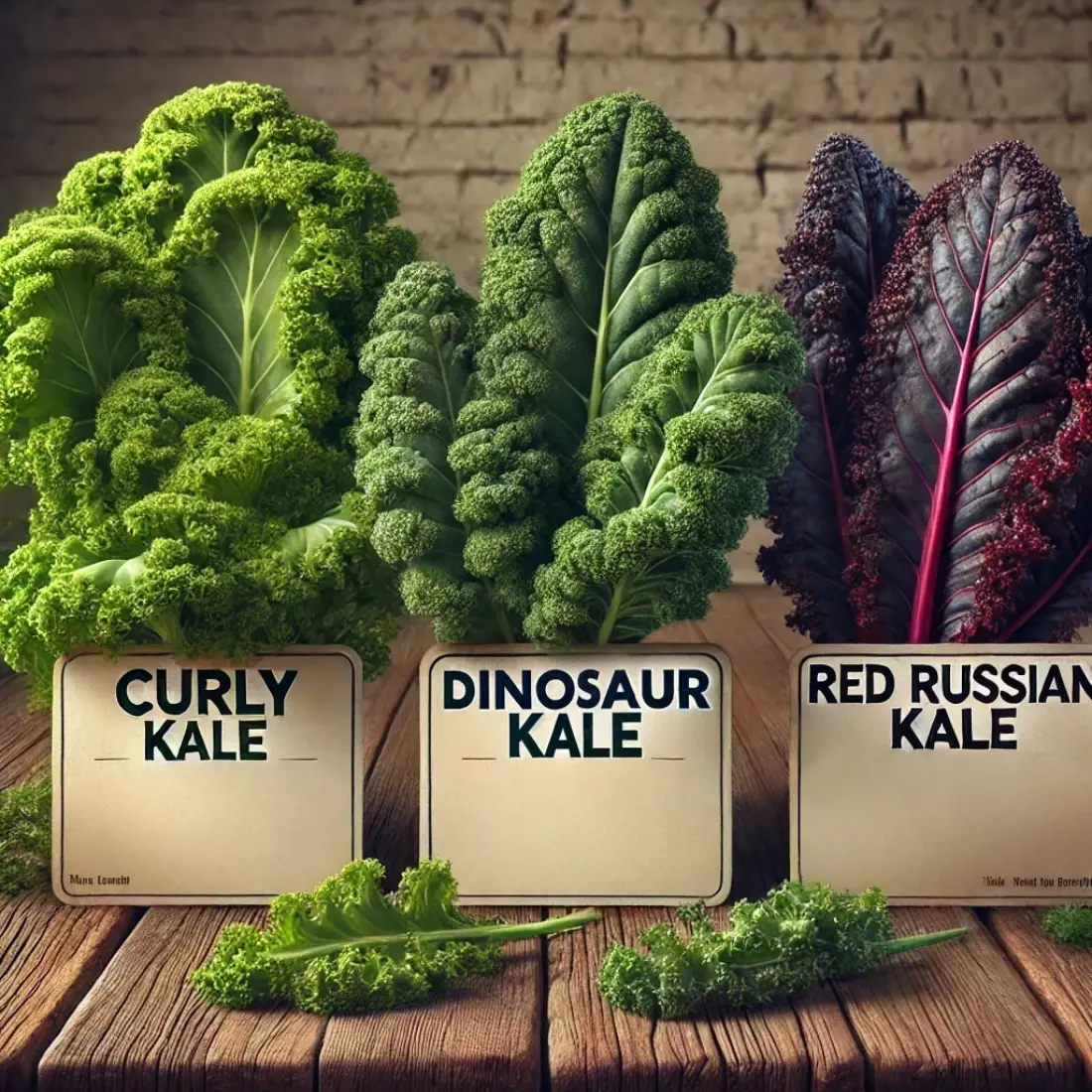
Selecting the best variety depends on your climate and intended use. For example, Lacinato Kale performs well in cooler climates, while Curly Kale is more versatile across different conditions.
Selecting the Perfect Spot
Kale thrives in a location that receives plenty of sunlight, ideally 6-8 hours a day. Whether you’re planting in a garden, pot, or balcony, ensure the spot is exposed to sufficient sunlight. For gardens, choose a well-drained area to prevent waterlogging. If using pots or containers, make sure they are placed where they can receive optimal light.
Soil Preparation
The foundation of a healthy kale plant is nutrient-rich, well-drained soil. Start by testing the soil pH, aiming for a slightly acidic to neutral range (6.0-7.0). Amend your soil with organic matter such as compost, aged manure, or leaf mold to enhance fertility and structure. These organic materials improve soil aeration, moisture retention, and provide essential nutrients.
Before planting, work a generous amount of compost into the top 6-8 inches of soil. This not only boosts soil health but also encourages strong root development. For container gardening, use a high-quality organic potting mix, enriched with compost or worm castings. Adding a layer of mulch around your kale plants helps retain soil moisture, suppress weeds, and maintain a stable soil temperature.
Growing Kale in the Garden
Planting Kale in the Garden
To plant kale in your garden, start by selecting a spot that receives at least 6-8 hours of direct sunlight daily. Kale thrives in cool weather, so plan to plant in early spring or fall. Prepare the soil by mixing in organic compost to ensure it is nutrient-rich and well-drained. Kale prefers a soil pH between 6.0 and 7.0.
Sow the seeds about 1/2 inch deep and space them 12-18 inches apart to give the plants room to grow. If using transplants, plant them at the same depth they were in their pots. Water the soil gently but thoroughly after planting. Applying a layer of mulch around the plants helps retain moisture and suppress weeds.
Watering and Fertilizing
Kale requires consistent watering to keep the soil evenly moist but not waterlogged. Water the plants at the base to avoid wetting the leaves, which can lead to disease. In dry weather, aim to water deeply about 1-2 times per week.
Fertilize kale every 4-6 weeks with organic fertilizers such as compost tea or fish emulsion. These provide essential nutrients and promote healthy growth. Avoid over-fertilizing, as it can lead to excessive leaf growth with less flavor.
Organic Pest Control
Kale is susceptible to pests like aphids, cabbage worms, and flea beetles. Implement organic pest control methods to protect your plants. Introduce beneficial insects such as ladybugs and lacewings that prey on common pests. Use neem oil or insecticidal soap to treat infestations naturally.
Companion planting can also deter pests. Plant kale alongside garlic, onions, or marigolds, which repel harmful insects. Regularly inspect your kale for signs of pests and remove any affected leaves immediately. Floating row covers can provide a physical barrier against pests while allowing sunlight and rain to reach the plants.
Growing Kale in Pots
Choosing the Right Pot
When growing kale in pots, selecting the right container is crucial for healthy growth. Choose a pot that is at least 12 inches in diameter and depth to accommodate the kale’s root system. Opt for pots made of materials like terracotta or plastic with adequate drainage holes to prevent waterlogging.
Soil Mix for Potted Kale
Use a high-quality organic potting mix for planting kale in pots. The mix should be well-draining yet able to retain enough moisture. Enhance the soil by adding compost or worm castings to provide essential nutrients. A mixture of equal parts potting soil, compost, and perlite or sand creates an ideal growing medium.
Planting and Care
Begin by filling the pot with your prepared soil mix, leaving about an inch of space at the top. Sow the kale seeds 1/2 inch deep or transplant seedlings into the pot. Water thoroughly after planting to settle the soil. Place the pot in a location that receives 6-8 hours of direct sunlight daily.
Water potted kale regularly to keep the soil consistently moist but not soggy. During hot weather, you may need to water daily. Fertilize every 4-6 weeks with an organic liquid fertilizer like fish emulsion or compost tea to replenish nutrients. Rotate the pot occasionally to ensure even sunlight exposure and prevent leggy growth.
Maintaining and Harvesting Kale
Pruning and Maintenance
Maintaining kale involves regular pruning to encourage healthy growth and prolong the harvesting period. Remove yellowing or damaged leaves to prevent disease and pests. Thin out crowded plants to improve air circulation, which helps reduce the risk of fungal infections. Regularly check for pests and treat them promptly using organic methods like neem oil or insecticidal soap.
Harvesting Kale
Harvesting kale is straightforward and can be done as needed. Begin by picking the outer leaves when they are about 8-10 inches long, leaving the inner leaves to continue growing. This method, known as “cut-and-come-again,” allows the plant to keep producing throughout the growing season. For the best flavor and texture, harvest in the morning when the leaves are crisp and cool.
Storing and Using Kale
Freshly harvested kale can be stored in the refrigerator for up to a week. Place the leaves in a plastic bag with a damp paper towel to maintain moisture. For longer storage, consider blanching and freezing the leaves, which can last up to six months.
Kale is versatile and can be used in a variety of dishes, such as salads, smoothies, soups, and sautés. Incorporating kale into your meals is an excellent way to boost your nutritional intake.
FAQs about Growing Kale
How often should I water my kale?
Kale needs consistent moisture to thrive. Water your kale deeply about 1-2 times per week, keeping the soil evenly moist but not waterlogged. During hot or dry periods, you may need to water more frequently.
What organic fertilizers work best for kale?
Compost, compost tea, fish emulsion, and worm castings are excellent organic fertilizers for kale. These provide essential nutrients and promote healthy growth. Apply every 4-6 weeks during the growing season.
How can I prevent pests on my kale without chemicals?
Organic pest control methods include companion planting (e.g., planting kale with garlic or marigolds), using neem oil or insecticidal soap, and introducing beneficial insects like ladybugs. Regularly inspect your plants and remove any affected leaves promptly.
Can kale be grown indoors organically?
Yes, kale can be grown indoors using organic methods. Ensure it gets plenty of light, either from a sunny window or a grow light, and plant in a pot with a high-quality organic potting mix. Keep the soil moist and fertilize with organic products.
What are the best companion plants for kale?
Companion plants that benefit kale include garlic, onions, marigolds, nasturtiums, and herbs like dill and cilantro. These plants can help deter pests and improve soil health.
When is the best time to plant kale?
Kale grows best in cool weather, so plant it in early spring or fall. In most regions, you can start seeds indoors 4-6 weeks before the last frost date and transplant them outdoors after the danger of frost has passed.
How do I know when my kale is ready to harvest?
Kale is ready to harvest when the leaves are about 8-10 inches long. Pick the outer leaves first, leaving the inner leaves to continue growing. The leaves should be firm and have a vibrant color.
How can I keep my kale from getting bitter?
Kale can become bitter if grown in hot weather or if the plants are stressed. To prevent bitterness, grow kale in cooler seasons, ensure consistent watering, and harvest leaves regularly to encourage new, tender growth.
What type of soil is best for growing kale?
Kale prefers well-drained, nutrient-rich soil with a pH between 6.0 and 7.0. Adding organic matter like compost improves soil fertility and structure, providing the ideal conditions for kale growth.
Can I grow kale in small spaces like a balcony?
Yes, kale can be grown in small spaces like balconies using containers. Choose pots that are at least 12 inches in diameter and depth, and ensure they receive at least 6-8 hours of sunlight daily. Use a high-quality organic potting mix and provide consistent watering and fertilization.

